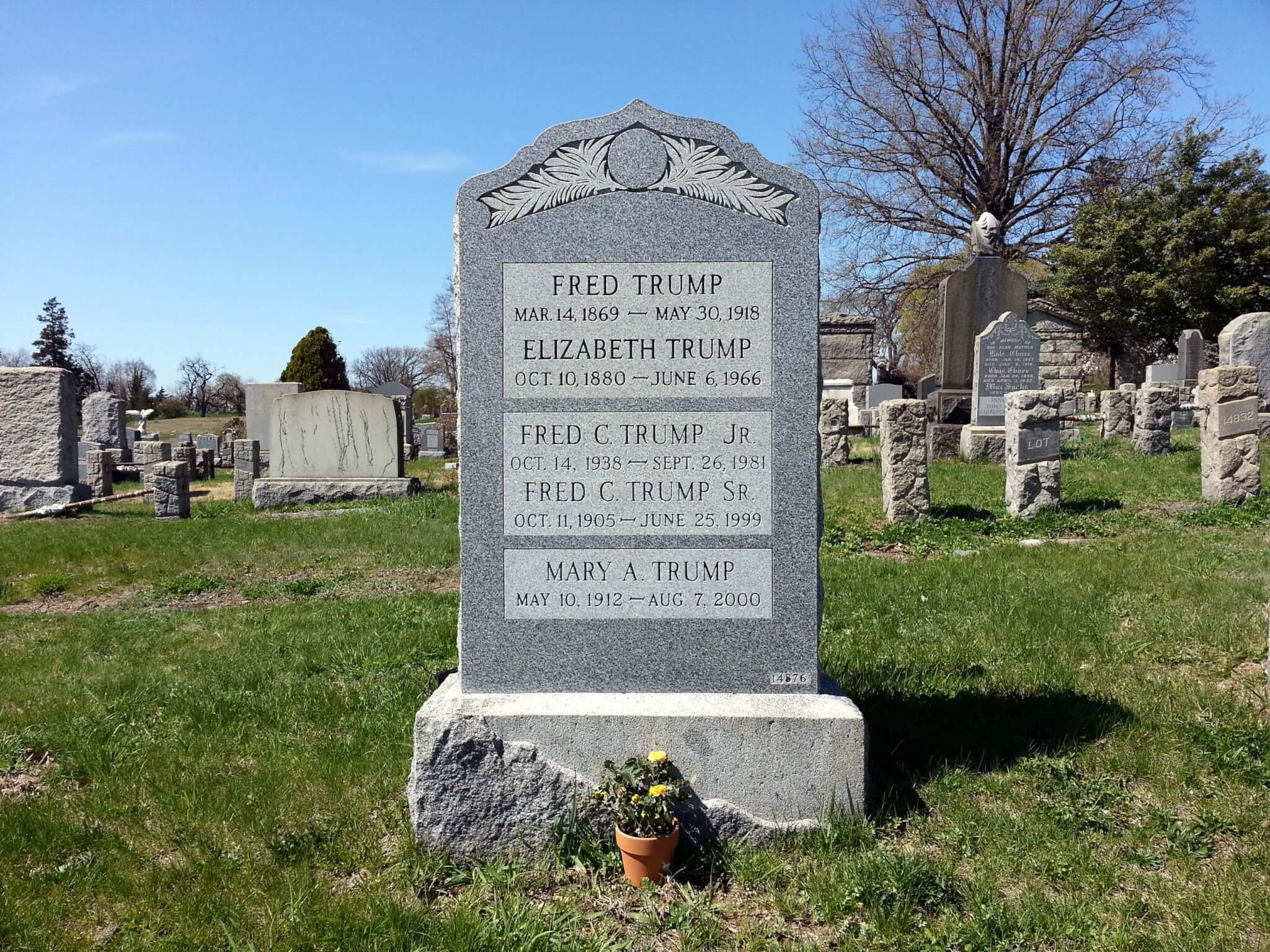Though it was Ivana Trump whose body lay to rest, the events of her funeral service and burial were Donald Trump’s affair. The couple had been divorced, not without rancor, for more than thirty years, but he presided at the front row of the Upper East Side service, and a hearse drove her coffin to one of his properties, 45 miles to the west. Ivana Trump, née Zelníčková and born in Zlín, Czechoslovakia, was laid to rest in a solitary grave near the first hole at the Trump National Golf Club in Bedminster, New Jersey.
The former president’s detractors were aghast at the incongruous scene of a solo grave, modestly decorated, tucked away in a place where people mostly party. Rumors spread, stoked by tweets from tax researcher Brooke Harrington, that Trump was rudely taking advantage of the “trifecta” of tax breaks available to cemetery companies: property, income, and sales tax. As Harrington pointed out, the New Jersey tax code does not require a minimum number of corpses to access these tax benefits. She added this isn’t the first Trump has tried to pull this one, in the Twitter thread she linked to a ProPublica document citing another Trump-owned New Jersey golf course the Trump Family Trust filed as a cemetery in 2016. Such a scheme would not have been out of character for Trump, but the story was hard to swallow. As several news outlets pointed out, it would be difficult to extend favorable tax treatment from a burial plot to the property’s other active uses (golfing, partying). Additionally, the Trump Organization already has the golf club covered by a pretty effective tax avoidance scheme: Some peripheral mulching and goat grazing activities allow it the tax class of a farm.
The prurient focus on the nefarious Trump blurs the background image of a nefarious system. In this case, the funeral and burial services industry. Trump had been eyeing the golf club as the site of a bit of mortuarial entrepreneurship since 2007, waxing in praise of the beautiful setting to reporters and, presumably, everyone he knew. He presented several iterations of plans for a burial site to local authorities that included a family plot as well as several hundred plots available for purchase, despite the fact that his family already has a plot at All Faiths Cemetery in Middle Village, Queens, where his parents, grandparents, and older brother are buried.
It isn’t hard to imagine why Trump wants to avoid the older generations in their ultimate repose. On both sides of the street by the Metropolitan Ave terminal of the M train, All Faiths Cemetery is old, crowded, and rundown. Or, as a Google reviewer kindly put it, it’s “charming, hidden, yet somehow forgotten and neglected.” The reasons for its neglect became more clear recently when its owners, Daniel Austin Sr. and Jr. (a former cop) were slammed with a lawsuit by the New York Attorney General for “extraordinary misconduct.” This included paying themselves millions, making mortgage loans to their relatives out of funerary funds, and charging exorbitant fees for doing, apparently, nothing at all. It should come as no surprise Trump wanted distance from such a sordid place, even if he were in on the graft.

When it comes to getting rich in the funeral industry, many of the Austins’ peers are doing it too, albeit legally. While (in most states) cemeteries do need to be owned by a non-profit organization (historically churches), they can be operated by anyone with a contract. For example, the Philadelphia Archdiocese has a 60-year management agreement on 13 cemeteries with a publicly traded company, Stonemor. The entity is one of the top five cemetery operators nationwide that make up 20 percent of the market (the top operator, Service Corporation International (SCI), owns the chapel that hosted Ivana’s service).Companies like StoneMor and SCI do charge their tenants annual fees which enter (supposedly) restricted maintenance funds, but the real profit comes from, simply, squeezing the customer with monopsony power over funerary goods and services. These include the essential tasks of care for the body and burial, as well as the sale of various overpriced receptacles and ecologically harmful services like embalming and concrete grave liners (which actually makes it easier to mow the surrounding lawn). Along the way, they enjoy the aforementioned tax break trifecta. And then, there’s the most precious commodity of all: the real estate.
In Trump’s native New York City, cemetery real estate is the most expensive in the world, if it can be bought at all. Manhattan cemeteries are out of room completely. A plot at Woodlawn Cemetery in the Bronx can be bought for upwards of $10,000 (approximately $400 per square foot) while housing nearby goes for about $340 per square foot. The United States is unusual in granting cultural and legal rights to a burial plot in perpetuity; many European countries re-lease plots after a generation or so, either placing remaining remains in an ossuary or digging them deeper into the ground. But in the United States, private land tenure rights are sacrosanct, and your grave is yours forever. As earlier generations occupy land claimed long ago, the new generation spreads out further onto a new frontier in search of unspoiled terrain. So Ivana endured a fate that awaits most of us New Yorkers: being buried in the suburbs.
Avi Garelick is an urban researcher and writer living in New York.











